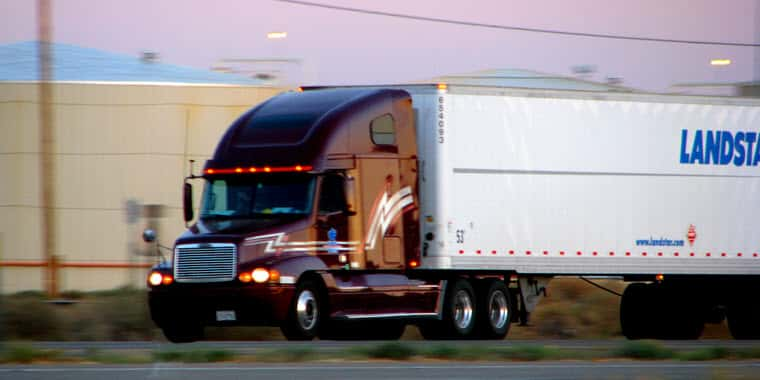Farmers and livestock producers in the market for a new semi-truck could face a different market in 2027 under new greenhouse gas (GHG) standards for heavy-duty vehicles finalized by the Biden administration on Friday, March 29.
EPA announced new, final national emission standards for heavy-duty vehicles model years 2027 through 2032. Officials stated the new rule would avoid 1 billion tons of greenhouse gas emissions while reducing air pollution for 72 million people who live near heavy trucking routes as well.
The new rule includes delivery trucks, refuse haulers or dump trucks, public utility trucks, transit, shuttles, school buses and semi-trucks. They would have to meet lower pollutant criteria standards for 2027 through 2032.
EPA Administrator Michael Regan said the new rule is “the strongest national greenhouse gas standard for heavy-duty vehicles in history” and will end up saving trucking operators on fuel costs in the long run. While the trucking industry argues that EPA is trying to force the industry to develop electric delivery and semi-trucks, Regan insisted the rule is “technology neutral.” He noted the proposed rule last year generated more than 170,000 public comments and really spoke to the need for a diverse set of options” for manufacturers to choose their own technology.
“Whether that’s advanced internal combustion engine vehicles, hybrid vehicles, plug-in hybrid vehicles, battery electric vehicles and hydrogen fuel-cell vehicles,” Regan said on a call Thursday with reporters.
Still, a coalition of trucking industry interests, including the American Trucking Association, earlier this month released a report on “full electrification” of the U.S. commercial truck fleet citing it would require nearly $1 trillion in infrastructure investment alone. That includes roughly $620 billion in charging infrastructure. That doesn’t include actual costs for new semi-trucks. The industry report cites a new diesel Class 8 truck costs roughly $180,000 while a comparable electric-battery truck costs more than $400,000.
Not everyone in the industry is against the emissions rule. In February, an alliance of major heavy-duty engine manufacturers issued a joint “statement of principles” calling on EPA to issue its final rule. Companies such as BorgWarner, Cummins, Eaton and Ford state they were committed to “aggressively cutting GHG emissions with near-term milestones and long-term net zero goals.” The group also stressed the need for a “whole of government approach” to partner with private industry to meet the new EPA standards.
It’s unclear exactly how many farmers and livestock producers own or operate semi-trucks. The 2022 Ag Census combined “trucks, including pickups,” in its details on selected machinery, showing 1.47 million farms owned 3.16 million trucks and/or pickups.
Congress voted a year ago along largely party lines to rescind EPA’s rule for tougher emission standards for heavy-duty trucks, but President Joe Biden vetoed the bill.
Biden administration officials pointed to $7.5 billion nationally invested by taxpayers to build electric charging stations — though most of that money is expected to pay for chargers for smaller consumer vehicles. The IRA also includes tax credits of up to $40,000 to pay for “clean” new vehicles. Other tax credits can be used for fuel infrastructure investments as well.
TAX CREDITS FOR FUEL INFRASTRUCTURE INCENTIVES
“The promise here is so tremendous and the climate stakes here are big,” said Ali Zaidi, a White House climate advisor.
Paul Billings, senior vice president of public policy for the American Lung Association, also pointed to a recent poll showing 72% of voters support EPA implementing stronger emission standards for heavy-duty vehicles.
“Today’s rule will improve the air we breathe and curb the pollution that is driving climate change,” Billings said.
The heavy-duty truck rule comes just a week after the Biden administration finalized similar rules for passenger cars and light-duty trucks for 2027-2032. That rule drew criticism from the biofuels industry that it would force auto manufacturers to produce more electric vehicles.
####
DTN – 2024


